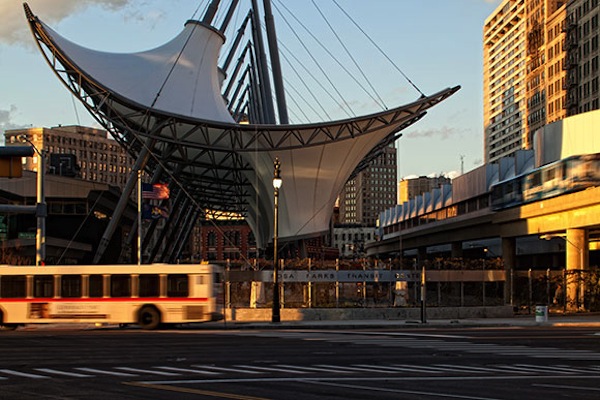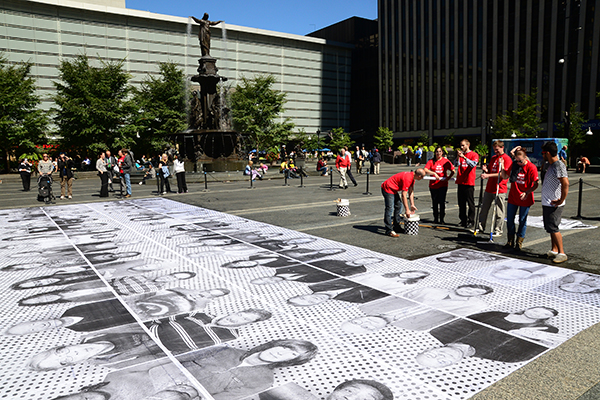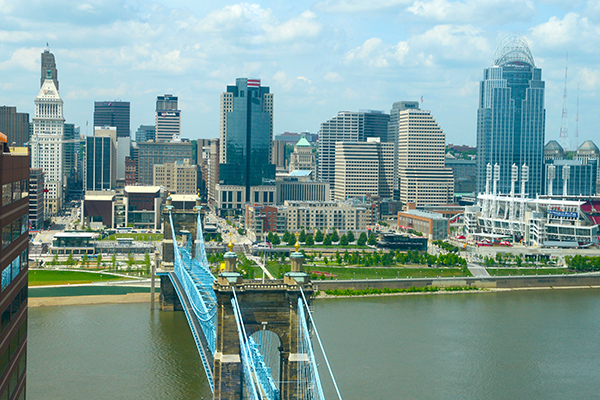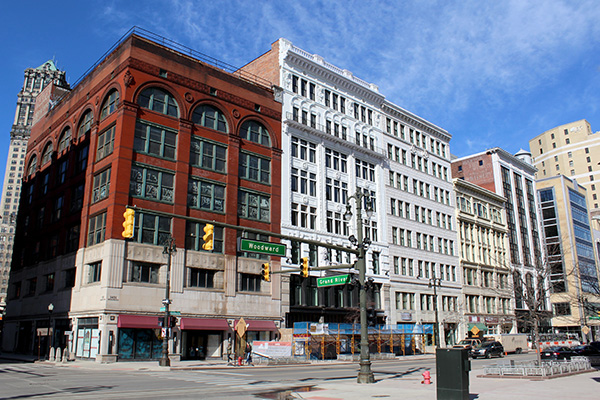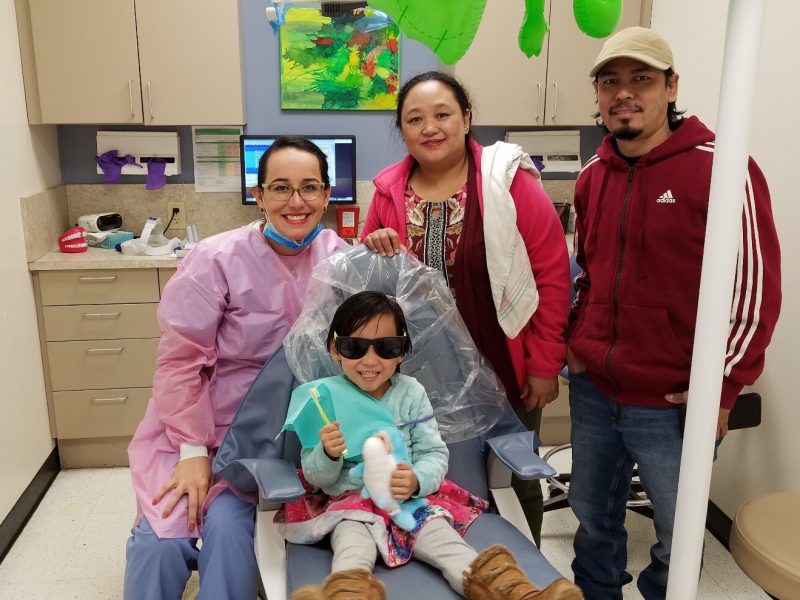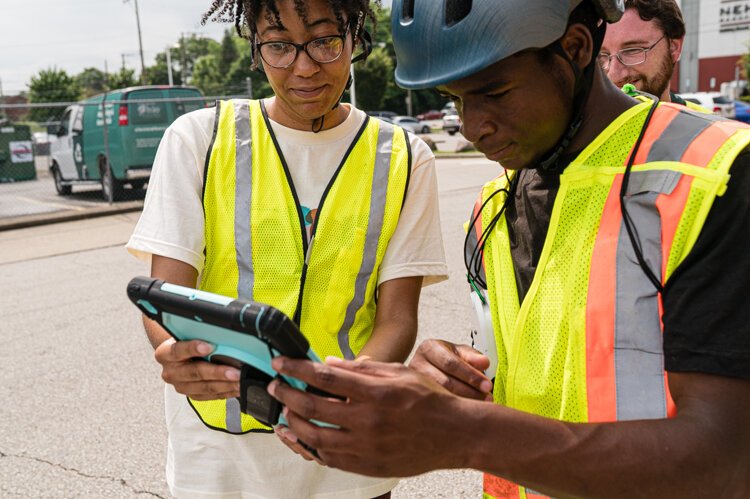Soapdish: A tale of two cities
Is Cincinnati the next Detroit? Hardly, says Soapdish columnist Casey Coston. And he should know, he's lived in both cities.
“Cincinnati is on its way to becoming the next Detroit.”
I have heard this sentiment expressed numerous times over the course of my 13-plus years living in Cincinnati. As someone who moved here after spending 10 years in Detroit, the comment (generally directed toward vague notions of fiscal irresponsibility, poverty and political malpractice/malfeasance) belies a wealth of ignorance about both cities. Local politicians who weighed in during the tortured streetcar debate would often throw out the Detroit “bogeyman,” as if they had any idea what they were talking about (they did not).
It’s something that always stuck in my craw, and my response was always “You have no idea what you are talking about.”
Cincinnati, with its Rust Belt outlier origins and near-Southern, rivertown exposure, is pretty much half the size, physically, of Detroit, and even at its height, was only a third of Detroit — at best — in total population. Nevertheless, with its verdant rolling hills and dense, historic architecture (much of what remains to this day), it featured a built environment that was decidedly East Coast in nature. Sir Winston Churchill declared it the “most beautiful inland city in America.”
Cincinnati was dubbed the “Queen City of the West” in the mid-19th century, and was at one time the sixth largest city in the country and certainly the largest city in the “West.” The city was also the first major American city founded after the American Revolution, as well as the first major inland city in the country. By the end of the 19th century, however, with the shift from steamboats to railroads drawing off freight shipping, trade patterns were precipitously altered and Cincinnati’s growth slowed considerably. Cincinnati went all in on riverboat trade, and saw a noticeable slowdown as Chicago asserted its railroad might.
By contrast, Detroit, with its manufacturing might and arsenal of democracy-powering machinery, grew in spectacular fashion over the first half of the 20th century, with census estimates placing its population at just over 2 million in 1955. While both cities have seen a drop off from their respective 19th and 20th century heydays, Detroit’s fall, while massive, was a 55-year-long decline attributable to a myriad of factors — choose any “cause-of-the-decade,” be it suburban flight, crack, the foreclosure crisis, the energy crisis, etc.
Detroit is the proverbial “canary in the coal mine,” the tabula rasa for 21st century back-from-the-brink urban planning. Its position in the pantheon of American urban decline is literally sui generis, which is why any attempts to compare it to other cities is absurd. It’s not like comparing apples and oranges, but rather apples and, well, unicorns.
Jerry Paffendorf, CEO of Loveland Technologies, a digital mapping startup that surveys blight, foreclosures and taxation, described the situation. “Detroit’s problems can be so extreme and singular that it’s hard to compare it to other cities. On population loss, economic hardship, racial division, educational malfunction, deferred maintenance and environmental blight, it’s pretty much the End Boss.”
But saying Detroit is on its way to becoming the next Cincinnati is not necessarily a bad thing, nor is the converse. There are takeaways on both sides, and there are things that Cincinnati can learn from Detroit, and vice versa. Moreover, I have always had the impression that, despite being separated by a mere four hours on Interstate 75, there is a distinct lack of familiarity in both cities with the other.
A lot of this has to do with how cities identify with what they perceive to be peers, and in Detroit you are historically measuring against the Chicagos and Clevelands, despite its relevance in modern-day realities.
Both Cincinnati and Detroit’s populations peaked at the midpoint of the 20th century. Detroit’s population, as noted above, peaked in 1955, Cincinnati’s in 1951. Curiously enough, in the year following their peak populations, both cities dismantled their urban streetcar systems. Detroit’s system covered 534 miles in total track, while Cincinnati’s approached 250 miles.
In the decades since, both cities saw long, inexorable declines in population, with Detroit losing approximately 1.3 million, and Cincinnati declining from a peak of 503,998 to current 2015 estimates of 298,550. Cincinnati has, however, seen four years of modest growth, according to census estimates, which also (again curiously enough), coincided with the construction of a new, modern streetcar system.
While postulating that the dismantling of historic streetcar systems led to a decades-long population exodus in both cities is specious and circumstantial — at best, it is a “fun fact” type milestone. Moreover, the rebirth of these streetcars in both cities does provide some interesting contrasts, specifically the role and involvement of the private sector and nonprofit foundations (or lack thereof).
Specifically, Cincinnati’s modern streetcar origins were originally spearheaded by a mayor, backed by an (at times) progressive city council, along with a broad coalition of grassroots supporters. Detroit’s QLine streetcar, a $179 million, 3.4-mile project, by contrast, has been led by a massive coalition of businesses buttressed by a huge backstop of nonprofit foundation funds.
Just look at the list of corporate and nonprofit funding for the QLine, totaling over $124.2 million alone, with names like Quicken Loans, Ford, General Motors, Penske and Ilitch. The Kresge Foundation alone gave $49.5 million.
Cincinnati’s private and nonprofit support is notable for the $9 million backstop for operational costs provided by the Haile/U.S. Bank Foundation, and no more than $50,000, at best, from some smaller contributors. The contrast with Detroit could not be more stark.
And this one example highlights the massive difference that both the business community and, more significantly, the major foundation players, are taking in their respective cities.
When Detroit hit its nadir with the Chapter 9 bankruptcy of 2013, the local government had, to some extent, long abdicated many of the traditional roles of government — for example, in the case of the QLine, transit infrastructure. Dan Gilbert and his Quicken Loans empire (and Bedrock/Rock Ventures real estate holding and development arms), in real life-Monopoly fashion, practically consumed entire swaths of the central business district, becoming something of a de facto city in and of itself (see, e.g. Gilbert’s private security force). Into the vacuum flowed millions of dollars of support and investment from the corporate, nonprofit foundation and philanthropic communities, eager to participate and invest in a unique scenario unparalleled in the history of major American cities, rebuilding and re-imagining a modern day Detroit.
Paffendorf described the three forces in Detroit most actively shaping the development of the city and providing services that you would typically associate with public government: foundations, corporate benefactors and public authorities.
As he noted: “We have a massive foundation community with billions of dollars of philanthropic capital at work on all manner of projects intended to promote the public good. We have a major company that has gone all-in on purchasing, renovating and repopulating downtown Detroit, while also providing (in some cases) transportation, entertainment and security. And we have many quasi-public authorities that provide public services but are not run by public officials (Detroit Land Bank Authority, Great Lakes Water Authority, Detroit Building Authority, Public Lighting Authority, Education Achievement Authority, Downtown Development Authority, etc.). This is an interesting situation, with many potential upsides, but also a lot to pay attention to, as it feels like the potential reformation of American government services. If Detroit foreshadows the future of other American cities, maybe the thing to watch isn’t the number of empty buildings, it’s how successful and responsive these alternative city planning, funding and governing efforts are.”
In this sense, there are certainly valuable lessons in this evolving “new urban economy” that Cincinnati can take from Detroit, specifically, the re-imagining and “reformation” of government services, and the role of the business and philanthropic communities in all of it.
Since 2003, we in Cincinnati have seen one such business community effort with the creation and subsequent huge growth of 3CDC, the private, nonprofit corporation, in not only massive economic development in downtown and Over-the-Rhine, but also the rehabilitation and redevelopment of what are traditionally public spaces (Fountain Square, Washington Park, Ziegler Park).
Since 2004, over $1.1 billion has been invested in redevelopment and new construction projects that 3CDC has been involved with, capitalizing on Cincinnati’s dense, historic and walkable urban fabric.
In Detroit, the alphabet soup of downtown development authorities such as the DEGC and DDA do not come close to matching what 3CDC has done in its relatively short existence. Gilbert, however, is essentially something of a for-profit, one-man version of 3CDC, and whether or not that is an ideal, long-term solution remains to be seen. Detroit’s history has not been kind to the putting-all-the-eggs-in-one-basket philosophy of corporate benefactors (see, e.g. Three, The Big).
In Cincinnati’s nonprofit field, the Haile Foundation, with People’s Liberty, has provided a philanthropic spark on the local scene via its efforts to invest directly in individuals via grantmaking and mentorship. In fact, leaders from three national foundations that are revolutionizing philanthropy through innovative initiatives are coming to Cincinnati to participate in Issue Media Group/Soapbox’s IDEALAB program, taking place in Cincinnati on Dec. 8, presented by the Haile Foundation and People’s Liberty. Any and all involved in the local philanthropic community, from all perspectives, would be well advised to attend. This type of collaborative sharing of best practices among cities would seem to be key in mapping the future trajectories of cities like Detroit and Cincinnati.
Francis Grunow, a Detroit writer with Soapbox parent company IMG, echoes this sentiment. “Personally, I would love more information exchange between cities, sharing ideas and best practices, as we rediscover the inherent value of urbanity, and try to reinvest in these places in ways that are more equitable than they may have been the first time round.”
Indeed, to this point, one of the moderators of IDEALAB will be Claire Nelson of Detroit’s Urban Consulate, a Knight Foundation-funded exchange between Detroit, New Orleans and Philadelphia. That model, or something similar, would definitely be worth considering to increase the dialogue and sharing of information between Detroit and Cincinnati.
Perhaps we can set up our own Urban Consulate at IDEALAB, as it has become clear that, in the course of this examination, my originally intended subject matter is far deeper than this limited virtual space can ideally provide.
As such, I’d like to propose that we continue this discussion, expanding further on what Detroit can learn from Cincinnati, and vice versa. I can’t help but think this column has merely laid the groundwork and scratched the surface. See you at IDEALAB on Dec. 8, and stay tuned for Part II on this topic.



